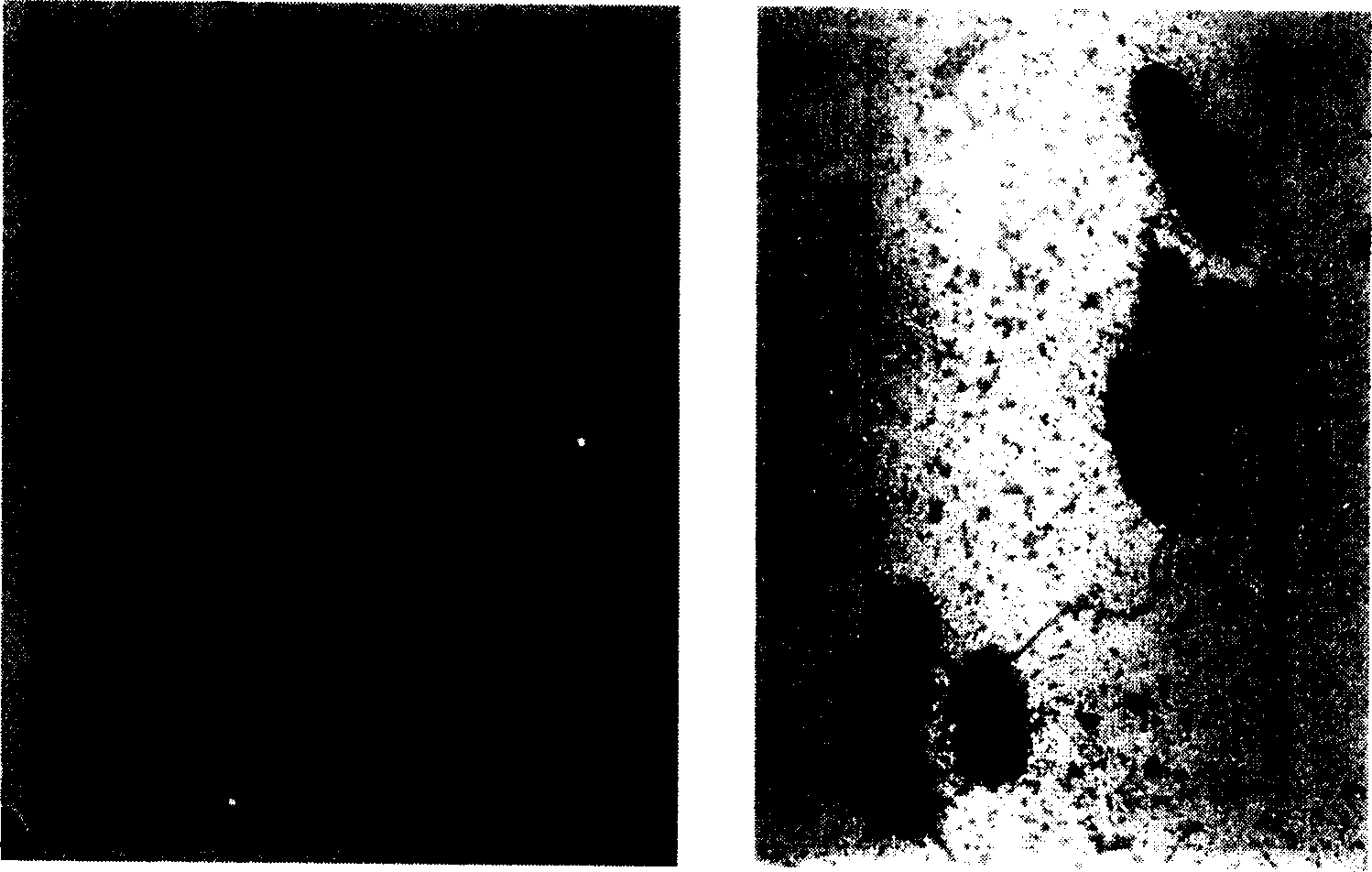Shewanella decolorationis
A technology of shewanella decolorationis and decolorizing Shewanella, applied in bacteria and other directions, can solve the problem of not finding the ability of Shewanella to degrade dyes, and achieve the effect of improving the quality of water ecological environment, simple equipment, and reducing chromaticity and COD.
- Summary
- Abstract
- Description
- Claims
- Application Information
AI Technical Summary
Problems solved by technology
Method used
Image
Examples
Embodiment 1
[0024] Add Na to 200 mL deionized water 2 HPO 4 .7H 2 O 2.56g, KH 2 PO 4 0.6g, NaCl 0.1g, NH 4 Cl 0.2g, Acid Scarlet GR (C.I.27290) 0.01g, sterilized at 211°C for 20 minutes as a dye culture solution. Inoculate the LB liquid medium from the slant where Shewanella depigmentation was preserved, and activate the bacteria on a shaker at 30°C and 150r / min to make the number of bacteria reach 10 8 Order of magnitude, inoculate the activated bacteria solution in the dye culture solution with an inoculation amount of 1 / 10, and culture it statically at 30°C, observe the color change of the culture solution, take 10mL of the dye culture solution every 30 minutes and centrifuge at 6 000r / min to remove the bacteria The absorbance of Acid Scarlet GR (C.I.27290) in the dye culture solution was measured at 503nm with a DU640 ultraviolet spectrophotometer (BECKMAN), and the dye degradation rate was calculated using the dye culture solution without bacteria as a control. After 2 hours, ...
Embodiment 2
[0026] Add Na to 200 mL deionized water 2 HPO 4. 7H 2 O 2.56g, KH 2 PO 4 0.6g, NaCl 0.1g, NH 4 Cl 0.2g, Acid Scarlet GR (C.I.27290) 0.1g, sterilized at 211°C for 20 minutes as a dye culture solution. Inoculate the LB liquid medium from the slant where Shewanella depigmentation was preserved, and activate the bacteria on a shaker at 30°C and 150r / min to make the number of bacteria reach 10 8 Order of magnitude, inoculate the activated bacteria solution in the dye culture solution with an inoculation amount of 1 / 10, and culture it statically at 30°C, observe the color change of the culture solution, take 10mL of the dye culture solution every 30 minutes and centrifuge at 6 000r / min to remove the bacteria The absorbance of Acid Scarlet GR (C.I.27290) in the dye culture solution was measured at 503nm with a DU640 ultraviolet spectrophotometer (BECKMAN), and the dye degradation rate was calculated using the dye culture solution without bacteria as a control. After 4 days, th...
Embodiment 3
[0028] Add Na to 200 mL deionized water2 HPO 4 .7H 2 O 2.56g, KH 2 PO 4 0.6g, NaCl 0.1g, NH 4 Cl 0.2g, Reactive Brilliant Blue (C.I.612051) 0.01g, sterilized at 211°C for 20 minutes as dye culture solution. Inoculate the LB liquid medium from the slant where Shewanella depigmentation was preserved, and activate the bacteria on a shaker at 30°C and 150r / min to make the number of bacteria reach 10 8 Order of magnitude, inoculate the activated bacteria solution in the dye culture solution with an inoculation amount of 1 / 10, and culture it statically at 30°C, observe the color change of the culture solution, take 10mL of the dye culture solution every 30 minutes and centrifuge at 6 000r / min to remove the bacteria DU640 UV spectrophotometer (BECKMAN) was used to measure the absorbance of reactive brilliant blue (C.I.612051) in the dye culture solution at 592nm, and the dye culture solution without bacteria was used as a control to calculate the degradation rate of the dye. Af...
PUM
 Login to View More
Login to View More Abstract
Description
Claims
Application Information
 Login to View More
Login to View More - R&D
- Intellectual Property
- Life Sciences
- Materials
- Tech Scout
- Unparalleled Data Quality
- Higher Quality Content
- 60% Fewer Hallucinations
Browse by: Latest US Patents, China's latest patents, Technical Efficacy Thesaurus, Application Domain, Technology Topic, Popular Technical Reports.
© 2025 PatSnap. All rights reserved.Legal|Privacy policy|Modern Slavery Act Transparency Statement|Sitemap|About US| Contact US: help@patsnap.com

